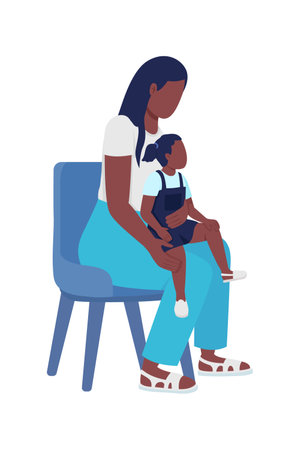Understanding Co-Sleeping and its Roots in the UK
Co-sleeping, where parents share a bed or room with their baby, has long held a place in British family life. While the practice varies across regions and households, many British parents choose co-sleeping for its emotional and practical benefits. Historically, families often shared beds out of necessity—older homes frequently had limited bedrooms and heating. Today, some parents are drawn to co-sleeping as it fosters closeness, supports breastfeeding, and offers reassurance during those early months of parenthood.
Culturally, attitudes towards co-sleeping in the UK have shifted over time. While health authorities like the NHS advise caution due to safety concerns such as SIDS (sudden infant death syndrome), there remains an undercurrent of acceptance among many British families. Parents often weigh the perceived benefits—like improved sleep for both baby and caregiver, easier night-time feeds, and stronger bonds—against potential challenges. These can include disrupted adult sleep, difficulties transitioning to independent sleeping later on, and worries about fostering long-term sleep dependencies.
For British parents, the choice to co-sleep is influenced by tradition, modern parenting philosophies, and personal circumstances. Understanding these cultural roots helps set the stage for a gentle transition from co-sleeping to helping your child develop independent sleeping habits—a journey shaped by both heritage and a desire for nurturing family wellbeing.
Signs Your Child is Ready for Independent Sleeping
Recognising when your child is ready to move from co-sleeping to their own bed is a gentle art, especially in British households where subtle routines and traditions often play a role. Understanding developmental cues and emotional readiness can help you make this transition smooth and supportive for both you and your child.
Developmental Cues to Look Out For
Children develop at their own pace, but there are some common signs that suggest they might be prepared for independent sleeping. In the UK, parents often notice these milestones during daily family life:
| Developmental Cue | Description | Typical British Example |
|---|---|---|
| Increased Independence | Your child starts wanting to do things on their own, such as dressing or tidying up toys. | Asking to “do it myself” after a bedtime story or while putting on pyjamas. |
| Consistent Sleep Patterns | Your child falls asleep and wakes up around the same time each day, even during weekends. | Settling after a warm milk drink or a bath before bed—classic parts of a British bedtime routine. |
| Comfort with Familiar Objects | Your child forms an attachment to a comforter, teddy bear, or blanket. | Cuddling a beloved toy brought from nursery or given by grandparents. |
| Ability to Self-Soothe | Your child can settle themselves back to sleep without much intervention. | Murmuring quietly or humming after waking in the night rather than calling out immediately. |
Emotional Readiness: The Heart of the Matter
Beyond physical cues, emotional readiness is crucial. Many British parents observe their child’s feelings about sleep changes through everyday conversations and quiet moments together. A few signs include:
- Expressing Interest: Showing curiosity about their own “big kid bed” or bedroom decor.
- Saying Goodnight Comfortably: Willingly saying goodnight and not expressing distress at short separations during naps or playtime.
- Engaging in Bedtime Rituals: Participating eagerly in familiar evening routines, like listening to classic British bedtime stories (think “The Tiger Who Came to Tea”) or singing lullabies together.
Navigating Subtle Family Routines
The rhythm of British family life can offer helpful indicators. If your child adapts well to transitions—such as moving from dinner time to bath time, or from playing in the lounge to getting ready for bed—they may be emotionally prepared for sleeping alone. Notice how they respond to these gentle signals within your daily routine; sometimes it’s the small, consistent habits that indicate true readiness.

3. Creating a Cosy and Safe Sleep Environment
Transitioning your child from co-sleeping to their own bed is much smoother when their new sleep space feels inviting, safe, and familiar. Start by ensuring the bedroom meets all current UK safety standards: use a cot or bed with secure rails for younger children, avoid heavy bedding, and ensure there are no loose cords or small objects within reach. Soft lighting, such as a gentle nightlight, can help ease bedtime anxieties and support a calming atmosphere. When it comes to comfort, think about layering bedding with familiar textures—perhaps a favourite blanket or a duvet cover featuring well-loved British characters like Peter Rabbit or Paddington Bear. Incorporate cherished British bedtime traditions: a warm cup of milk before lights out, sharing a classic storybook together (think “The Gruffalo” or “Winnie-the-Pooh”), or singing a gentle lullaby such as “Twinkle Twinkle Little Star.” Add personal touches like family photos, hand-knitted cushions, or even a comforting soft toy on the pillow. By thoughtfully blending safety, comfort, and beloved rituals, you’ll help your child feel secure and at home in their new sleeping environment—making the transition a positive experience for both parent and little one.
4. Gentle Transition Techniques for British Households
Helping your child move from co-sleeping to independent sleeping can feel daunting, but a gentle, step-by-step approach often works best—especially in the warm, family-centred atmosphere of many British homes. Below are effective and culturally resonant strategies tailored for UK families, designed to make the transition smooth and reassuring for both parent and child.
Step-by-Step Strategies
| Step | Description | British Touch |
|---|---|---|
| 1. Create a Cosy Bedroom Environment | Make your childs room inviting with soft bedding, familiar smells, and a comfortable temperature. | Add favourite storybooks like “The Gruffalo” or “Peppa Pig”, and perhaps a classic British nightlight shaped like a London bus or Paddington Bear. |
| 2. Introduce Bedtime Stories | Build a consistent bedtime routine centred around reading together. Let your child choose their bedtime book each night. | Select stories rooted in British culture or folklore to foster a sense of belonging and comfort. |
| 3. Offer a Cuddly Toy or Comforter | Allow your child to pick a special soft toy or blankie to sleep with—this provides comfort and continuity during the transition. | Many British children love classic toys like Jellycat bunnies or a soft Union Jack pillow. |
| 4. Practice Gradual Withdrawal | Start by staying with your child until they fall asleep, then gradually reduce your presence over several nights—from sitting on the bed, to sitting by the door, to eventually leaving the room before they’re fully asleep. | This slow approach is popular among British parents who value gentle parenting methods. |
| 5. Reassure with Gentle Words and Routine | Offer calming words and maintain a predictable routine at every step. Consistency helps children feel secure. | Phrases like “Night night, sleep tight” or singing a soothing British lullaby can be very comforting. |
Tips for Success in UK Homes
- Avoid sudden changes: Gradually introduce new routines over weeks, not days.
- Stay patient: Some setbacks are normal; respond with understanding rather than frustration.
- Cherish bedtime bonding: Use this time to strengthen connection through cuddles, chats about their day at nursery or school, and affectionate goodnights.
- Involve siblings: If possible, have siblings encourage the process by sharing their own independent sleeping successes.
When to Seek Extra Support
If your little one continues to struggle despite consistent efforts, consider reaching out to your health visitor or local parenting support groups—there’s no shame in seeking guidance, especially when it comes to making sure everyone gets a good night’s sleep!
5. Common Setbacks and How to Manage Them
Transitioning from co-sleeping to independent sleeping is rarely a smooth road, and British parents often encounter a few bumps along the way. Understanding these setbacks and having practical strategies at hand can make all the difference. Here are some of the most common challenges and how to address them in a calm, evidence-based manner.
Night Waking
It’s perfectly normal for children to wake during the night as they adjust to sleeping alone. Rather than rushing straight in, try the “pause and listen” technique often recommended by UK health visitors. Give your child a moment to settle themselves before offering gentle reassurance from the doorway. Consistency is key; avoid bringing them back into your bed, as this may reinforce the habit you’re trying to change.
Separation Anxiety
This stage can trigger separation anxiety, especially if it coincides with developmental milestones. Make use of familiar British bedtime routines—perhaps reading a favourite Julia Donaldson story or singing a soft lullaby like “Twinkle, Twinkle, Little Star.” Offer a comfort object such as a special teddy or blanket to help your child feel secure when you’re not in the room.
Resistance at Bedtime
If your little one resists going to bed alone, consider using a reward chart—a popular approach among UK families—to encourage positive behaviour. Stickers for each night spent independently can be highly motivating. Remember, patience and gentle encouragement go further than pressure or punishment.
Early Morning Wake-Ups
Many parents find their child wakes up earlier than usual during the transition. Blackout blinds are widely used across Britain to keep bedrooms dark during light mornings, helping signal that it’s not yet time to get up. You might also try a sleep-training clock set to show when it’s morning—a simple visual cue many British children respond well to.
When Challenges Persist
If setbacks continue despite your best efforts, don’t hesitate to seek guidance from local resources such as NHS health visitors or parenting support groups like NCT (National Childbirth Trust). Remember, every family’s journey is unique, and it’s perfectly acceptable to ask for support when needed. With steady routines and lots of reassurance, most British parents find their children settle into independent sleep with time and patience.
6. Involving the Whole Family in the Transition
Transitioning from co-sleeping to independent sleeping isn’t just a milestone for your child—it’s an adjustment for the entire family. Embracing this change as a collective effort can ease anxieties and foster a sense of unity within British households, where shared responsibilities and nurturing bonds are highly valued.
The Role of Siblings
Siblings can play a pivotal role in making the transition feel less daunting. Encourage older siblings to be positive role models by celebrating their own bedtime routines or sharing stories about when they moved to their own beds. Inviting them to help decorate the younger child’s new sleeping space with familiar British touches—like favourite football team posters or storybooks—can turn the process into a fun, inclusive activity. This involvement not only boosts the younger child’s confidence but also strengthens sibling relationships.
Partners Supporting Each Other
It’s common for both parents to have differing opinions or emotional responses during this transition. Open communication is key; set aside time for honest conversations about expectations and concerns, and agree on a consistent approach that aligns with your family’s values. British families often find success with tag-teaming bedtime routines—one partner might read a bedtime story while the other helps settle the child in bed. Sharing these responsibilities reinforces partnership and ensures that no one feels overwhelmed.
Creating Family Rituals
Establishing comforting rituals can be particularly effective in British households where tradition holds meaning. Consider introducing a “goodnight round,” where every member of the family gives a special goodnight hug or shares something they’re grateful for that day. Such rituals provide reassurance, create positive associations with bedtime, and make independent sleeping feel like a collective achievement.
Encouraging Togetherness Beyond Bedtime
Finally, remind children that independence at night doesn’t mean separation during the day. Plan regular family activities—weekend walks in the park, Sunday roasts, or simple tea times—to maintain closeness outside of sleep routines. By involving everyone and keeping lines of communication open, British families can navigate this transition smoothly, reinforcing bonds and building lasting memories together.
7. When to Seek Additional Support
Every family’s journey from co-sleeping to independent sleeping is unique, and sometimes, despite your best efforts and loving patience, you may find that progress feels particularly slow or challenging. In the UK, there is absolutely no shame in seeking extra help—quite the opposite, it reflects your commitment to your child’s wellbeing and restful nights for the whole family.
Recognising When Extra Help May Be Needed
If your little one continues to struggle with sleep despite consistent routines and gentle encouragement, or if sleep issues begin to affect their mood, behaviour, or your family’s overall wellbeing, it might be time to reach out for additional support. Other signs could include persistent night terrors, extreme separation anxiety at bedtime, or ongoing disturbances that leave everyone feeling exhausted.
Who Can Help?
In the UK, health visitors are a wonderful resource for parents navigating sleep transitions. These trained professionals can offer tailored advice, reassurance, and practical strategies rooted in up-to-date guidance. If challenges persist, they may recommend seeing a child sleep specialist—someone with expertise in paediatric sleep who can create a bespoke plan suited to your child’s needs.
Your Wellbeing Matters Too
Remember, parenting is not meant to be done alone. Seeking support is a sign of strength and care. Don’t hesitate to discuss your concerns with your GP or health visitor—they’re there to listen and guide you. By reaching out when needed, you’re helping to nurture not just your child’s independence but also your own confidence as a parent.
Above all, trust your instincts and know that support is readily available across the UK. With the right guidance and community around you, you’ll feel empowered every step of the way on this important transition.


